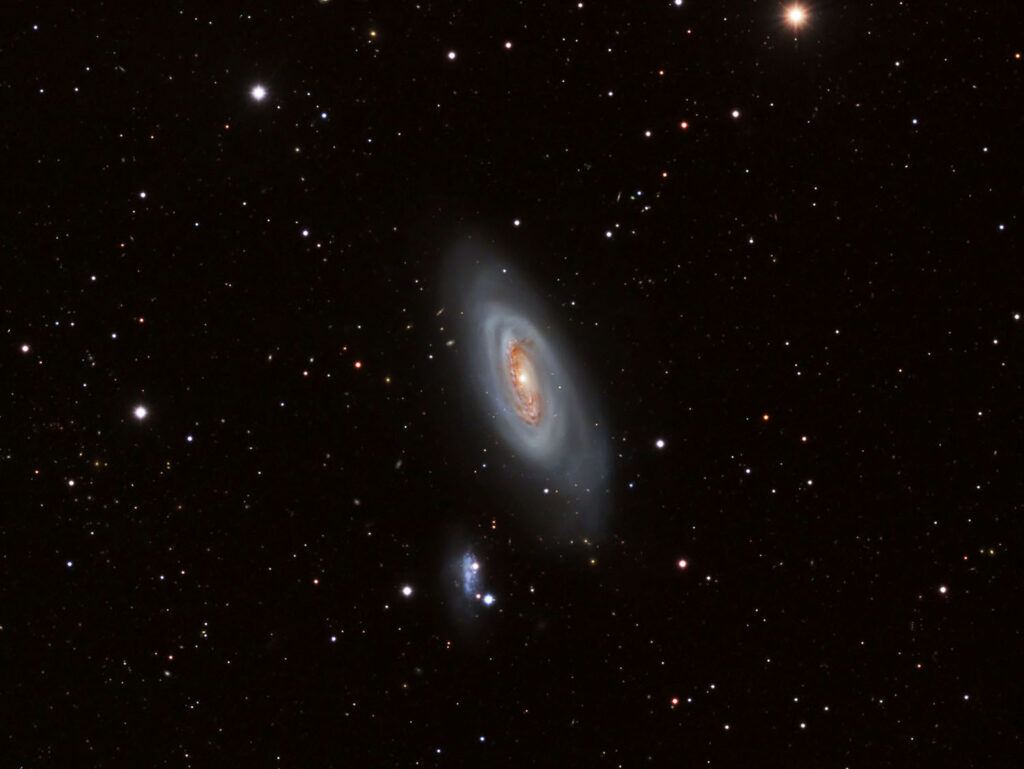Messier 90
Intermediate Spiral Galaxy, Virgo
- Description
- Technical
- Links
Messier 90 (also known as M90 and NGC 4569) is an intermediate spiral galaxy exhibiting a weak inner ring structure about 60 million light-years away in the constellation Virgo. It was discovered by Charles Messier in 1781.
Messier 90 is a member of the Virgo Cluster, being one of its largest and brightest spiral galaxies, with an absolute magnitude of around −22 (brighter than the Andromeda Galaxy). The galaxy is found about 1.5° from the central subgroup of Messier 87. Due to the galaxy’s interaction with the intracluster medium in its cluster, the galaxy has lost much of its interstellar medium. As a result of this process, which is referred to as ram-pressure stripping, the medium and star formation regions appear severely truncated compared to similar galaxies outside the Virgo Cluster and there are even H II regions outside the galactic plane, as well as long (up to 80,000-parsec, that is 260,000 light-year) tails of ionized gas that has been stripped away.
Telescope: Astro Physics 175EDF f8.3
Mount: Astro Physics 3600GTO “El Capitan”
Camera: SBIG STT8300
Guider: Mini Borg 50 / SBIG STi
L: 32×10 mins = 320 mins, R: 24×10 mins = 240 mins, G: 25×10 mins = 250 mins, B: 24×10 mins = 240 mins
Total Imaging Time: 17h 30m
Data Imaged remotely over 9 nights during April & May 2017.
Data acquisition & Processing by David Churchill.
None

